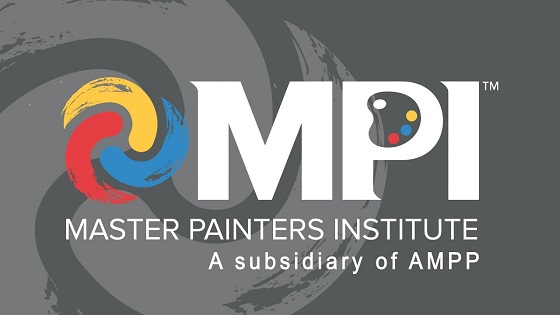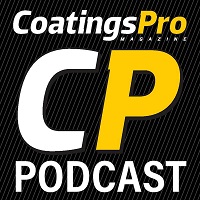The Master Painters Institute (MPI) recently introduced its newest solutions to streamline the process of specifying coatings. As part of this effort, the MPI Decision Tree tool offers a digital interactive guide prompting users to select the most suitable system and products for their commercial and architectural projects, whether for new construction or restorative/repair works.
 Pam Nicoletti, president of MPI, recently joined the CoatingsPro Interview Series of podcasts to elaborate on how this tool encompasses all project variables while significantly reducing manual efforts.
Pam Nicoletti, president of MPI, recently joined the CoatingsPro Interview Series of podcasts to elaborate on how this tool encompasses all project variables while significantly reducing manual efforts.
Read on for a partial Q&A transcript, and listen to the full episode online at www.coatingspromag.com/podcasts or at the embedded link below.
Q: Generally speaking, who are MPI’s customers? Can you shed some light on who the end users of MPI’s services are?
Pam Nicoletti: We work with architects and specifiers to make sure the products and people they’re using — for commercial coatings projects or architectural projects — meet a certain level of standards. We also work with paint manufacturers. They’re submitting samples to us, and we’re getting them listed with those architects, or the Navy, or others who are looking for products within certain categories.
We’re seeing a lot of demand around green, environmental, and sustainable properties. We’re working on launching some new educational series on green coatings, because we’re seeing a lot of new specifications coming out — especially in the East Coast and West Coast of the United States, and in Europe — that are specifying their products must meet a certain sustainable, or green, level. That’s a lot of what we’re working on right now, and what we’re seeing coming up in the industry.
Q: Let’s talk about the Decision Tree Tool, because I know that’s really important for you all in 2024. What was behind the creation of that, and what market shortcoming does it address?
 Nicoletti: MPI had a legacy Decision Tree Tool that was not nearly as interactive. So, when we started looking at that tool, and we started talking to people who needed to use it, we asked how we could improve upon it… to bring it to where it is today? That led to the current iteration of the tool, and the old tool looks nothing like the current one.
Nicoletti: MPI had a legacy Decision Tree Tool that was not nearly as interactive. So, when we started looking at that tool, and we started talking to people who needed to use it, we asked how we could improve upon it… to bring it to where it is today? That led to the current iteration of the tool, and the old tool looks nothing like the current one.
Ultimately, the Decision Tree Tool simplifies that decision making. Think about if you receive a standard on your desk that’s 200 pages long. You’ve got to go through that standard to make sure the products you’re selecting or specifying meet the needs … or meet what is called out in that standard.
Well, with the Decision Tree Tool, we’re going to ask you a series of questions, and we’re going to get you to that decision in minutes as opposed to hours. So, you’re really going to save time by going through this tool. Then, at the end, you can download those product specs and attach them to your job specifications, or the specifications you’re going to be using for that project.
Q: What was the development process like? What phases did you work through to get to the current product?
Nicoletti: The first phase is always research, right? We want to know what is needed from the audience and what’s needed from the industry. Then, how can we get there?
It’s basically an analysis of looking at those products, programs, and services. We have a number of subject matter experts that work with us at MPI. We also work with inspectors in Canada.
But we try to make this an industry outlook. So basically, when we look across the industry, we ask, “How are we going to meet the needs of the greatest number of people?”
Once that analysis was done, the team went back and started putting together the steps of the tool. That means asking, “What does this look like? How do we modify it when we see new paints and coatings coming in?” And we also need to make sure the tool is extensible enough that we can literally work with it for the future.
Then, our internal development team went to work. There was about a year’s worth of work on the tool to get it into the format it is today. And we’re constantly under improvement.
For example, one of the things we’re looking at now is whether it can be a mobile app, or if we can we make sure that it’s mobile friendly. So that when people don’t have access to a computer, they can use it on their phone. That’s some of the things we’re doing now.
We’re also working to improve the image quality, and we’re asking if there’s a way to speed up the technology. As you know, technology changes constantly. It all comes down to how can we take the tool and make it the best version for customers and industry professionals?
Q: At a high level, what are some examples of projects or situations in which this tool can potentially be used?
Nicoletti: We were just recently talking to some government officials — I’m not going to name names because I haven’t gotten their permission to say — and they were looking for exterior coatings on a facility.
 They had a mandate for the coatings to reach a certain performance level and a certain content level. So, they would go through and select from the tree for painting an exterior surface.
They had a mandate for the coatings to reach a certain performance level and a certain content level. So, they would go through and select from the tree for painting an exterior surface.
They were able to say, “Here’s the condition of the surface currently. Here’s the standards we need to meet. Here’s the environment we’re in.” We have to ask, “Are we in a human environment? Are we in a drier climate?” Those types of questions.
At the end, he was able to see a list of MPI coatings that are on the approved products list … to meet his needs for that project. Then, he can download that product plan to say, “Here’s what we can use for that project, and here’s how we should use those coatings.”
For more information, contact: MPI, (888) 674-8937, www.mpi.net/DTree.
Nicoletti’s comments were made on the CoatingsPro podcast. To hear the complete podcast episode, listen below.